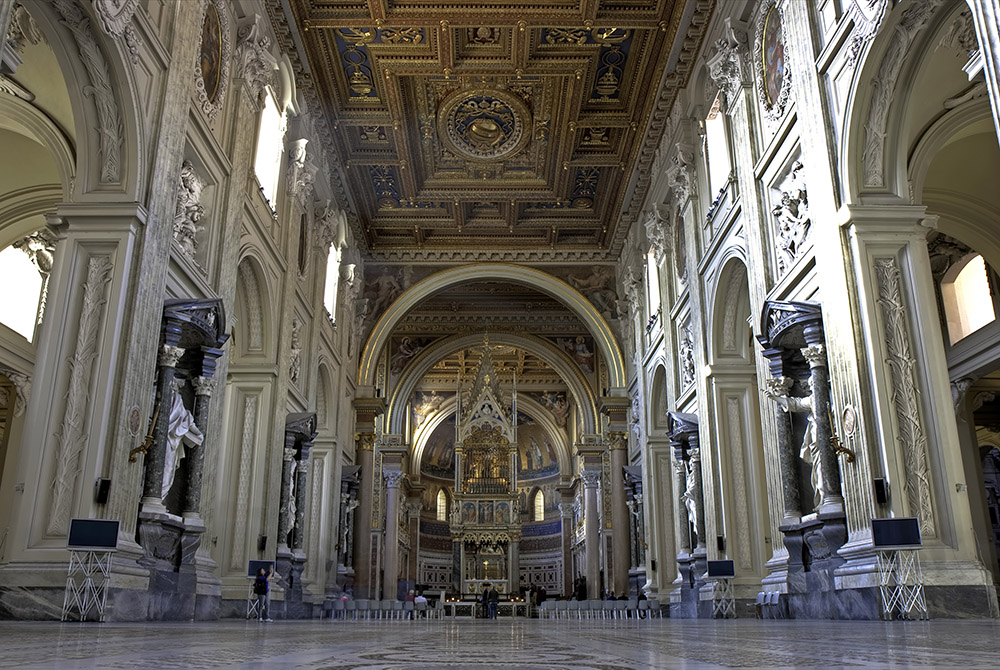The term “cathedral” comes from cathedra, the word describing a bishop’s throne. A cathedral, thus, is the principal church in a diocese. A bishop may preside over services anywhere in his diocese, but one church — usually in the place where he lives — is designated the cathedral.
The New Catholic Encyclopedia makes an interesting point, observing a cathedral need not be the diocese’s most impressive church. Many Catholics are surprised to learn that St. John Lateran, not St. Peter’s, is the cathedral of Rome.
What is less clear is the designation of a “basilica.” Originally, the term described a hall for public business, with an area designated for a legislator to sit. In its early days, the Church celebrated its liturgies in private homes, but embraced the notion of a special site for the presider. As the Church grew, and constructed special buildings for its services, it adopted this form for its structures. Later, an altar became part of the area reserved for the presider.
The present Code of Canon Law does not mention basilicas, but the earlier code observed that the Holy See grants the title, and acknowledged the “antiquity, dimensions or fame” of a church (see 1917 Code of Canon Law, Canon 1180).

